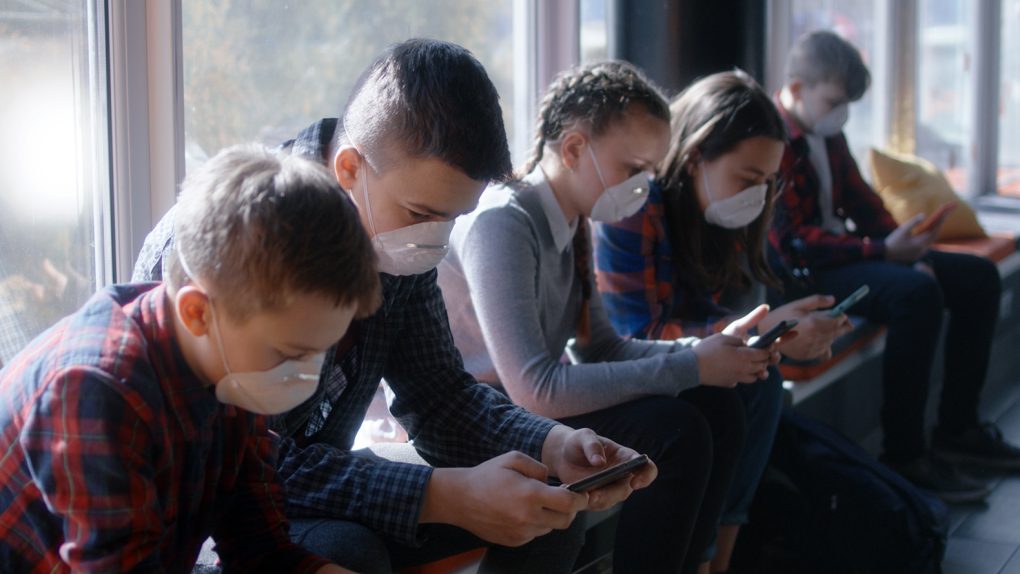- Asymptomatic patients can spread the coronavirus, several studies have shown. The SARS-CoV-2 virus multiplies within and can harm the body of a person who has been infected, even if no signs of the disease are visible.
- While patients might be unaware they’ve been infected, bloodwork and CT scans could provide proof that the body is fighting off an infection.
- The studies have shown that CT changes consistent with COVID-19 pneumonia can be observed in asymptomatic patients, as well as mild damage to the immune system.
One of the worst things about the way the novel coronavirus spreads is that a portion of the people who get the disease do not develop symptoms that would prompt them to get tested, seek advice, and stay in isolation. World Health Organization (WHO) officials fumbled remarks about asymptomatic patients a few days ago, having to walk back claims that they’re not contagious. That’s the kind of statement that could make matters worse. Thankfully, the WHO corrected its guidance, and other experts chimed in, including Dr. Anthony Fauci, who made it clear that asymptomatic patients are very much infectious.
It’s important to also note that people who contract the novel coronavirus but don’t show any visible signs do develop an infection. The virus does spread inside the body, and harms it in the process, even if that person can’t tell that anything is wrong. Various studies looked at health parameters of people infected with SARS-CoV-2 and found evidence in bloodwork and CT scans that the body of asymptomatic patients still fights the infection.
Researchers from Wuhan, China, published a paper in The Journal of the American Medical Association (JAMA) comparing the clinical characteristics of patients with COVID-19 symptoms and without. The scientists found that asymptomatics fared better than people showing evident signs of the infection, but testing showed that there was still damage done to their bodies:
Our finding of less consumption of CD4+T lymphocyte in asymptomatic infections suggests that damage to the immune system in asymptomatic infections was milder compared with symptomatic infections. Although patients who were asymptomatic experienced less harm to themselves, they may have been unaware of their disease and therefore not isolated themselves or sought treatment, or they may have been overlooked by health care workers and thus unknowingly transmitted the virus to others.
The study noted that asymptomatic patients had a lower proportion of liver injuries than symptomatics and showed faster lung recovery in CT scans. That means the lungs in asymptomatic patients are fighting off the infections themselves. The SARS-CoV-2 virus is replicating inside their lungs to a certain degree. Even if they don’t experience coughing or have trouble breathing, CT scans would still be able to pinpoint where the virus may be multiplying.
Separately, researchers from Honk Kong published a study in The Lancet a few days ago that focused on virus shedding (transmission) and seroconversion (the appearance of antibodies) of patients who were infected aboard the Diamond Princess cruise ship.
They also found that asymptomatic patients will develop lung injuries consistent with a COVID-19 infection, including ground glass changes in high-resolution CT scans ”consistent with interstitial pneumonia.” The researchers concluded the asymptomatic patients could carry the virus:
Despite the positive clinical findings, six of the nine patients remained asymptomatic throughout the 14-day quarantine after leaving the ship (ratio of symptomatic to asymptomatic patients 1:2). If the cruise ship epidemic is a microcosm of the community outbreak scenario, then individuals with or without pneumonia could carry the virus for a long period but remain asymptomatic.
Asymptomatic patients with few or no comorbidities could spread the disease, whereas symptomatic patients represent only a small, but visible, proportion of total cases.
[…] Transmission from asymptomatic individuals could explain in part the rapid increases in numbers of new cases in high-incidence countries such as the USA, Russia, the UK, Brazil, and European nations.
Finally, a third study that was also published in The Lancet looked at the clinical characteristics of 104 people infected with the novel coronavirus aboard the same cruise ship. 33 were asymptomatic throughout the observation period. Ten others were believed to be asymptomatic initially but started showing signs during observation.
The purpose of the study was to identify signs that could help scientists predict cases that would worsen. The Japanese researchers also found that 52% of asymptomatic patients developed various patterns of abnormal lung findings in CT scans, consistent with COVID-19. The doctors concluded that “chest CT might also be a useful diagnostic tool for asymptomatic and symptomatic people with SARS-CoV-2 infection.” The patients did not develop severe pneumonia, however.
The researchers noted increased LDH concentration in the serum in asymptomatic patients who eventually developed symptoms compared to the 33 who stayed asymptomatic throughout the study. “Our results indicate that increased LDH concentrations might also reflect lung tissue damage by COVID-19 and might be considered a predictor of symptomatic illness among people infected with SARS-CoV-2,” they said.
Also, they noted that 27% of asymptomatic patients developed lymphocytopenia, a drop in lymphocytes consistent with the Wuhan research. That’s to say, the immune system of asymptomatics can be affected after infection with the novel virus, even though they don’t develop any clear signs of the disease. “Comparing the concentrations of inflammatory cytokines and chemokines between patients with symptomatic and asymptomatic COVID-19 might help to understand the mechanism of lymphopenia,” the researchers wrote. A different study from the UK revealed a few weeks ago that a low lymphocyte count could be indicative of severe COVID-19.
All three studies indicate that people who do not manifest any of the known COVID-19 symptoms, but have been infected, do experience the disease without knowing. The virus will spread to the lungs, it will multiply, and it will affect the immune system. And these patients could infect other people, which is why social distancing and face mask use is so important during the pandemic.








